Is the glass half full or half empty? You can argue that it is half full because the so called ‘pure tones’ as introduced in the previous post work perfectly for making a four dimensional Fourier series based on the 4D complex numbers. The glass is half empty because I started this Fourier stuff more or less in order to get some real world applications done, but 1 dimensional signals like a sound fragment do not reconstruct properly.
Why do they not reconstruct properly? Well often you need to take the sum or the difference of a 4D complex number Z and it’s conjugate that I write as Z* (because I cannot do ‘overline’ in this text mode). But the sum or the difference of such 4D numbers removes only the real part or the second imaginary part. The first and third imaginary parts stay in this sum or difference, this stuff is what makes the reconstruction of a signal s(t) going wrong.
Yet I was not crazy, as far as the reconstruction works it does it more or less as expected only you get only half of the signal reconstructed. That is not that worse but the garbage that enters the reconstruction is what makes this kind of making a 4D Fourier series something that will never have any practical benefit. But again does that mean the glass is half empty?
I remember that a long time ago in something like 1991 or 1992 I had found the product of a 3D complex number X and it’s conjugate X*. My naive idea was that this should only give the unit sphere in 3D space, but this product that also two imaginary components that I considered garbage at the time. Back in the time, it was just before the internet era, I could not know that this ‘garbage’ was actually the equation of a cone. And if you intersect this cone with the unit sphere in the space of 3D complex numbers, you get the 3D exponential circle. So it wasn’t garbage, it was the main prize in 3D complex number theory.
Back in the time in 1991 it was stuped from me to expect the 3D complex numbers would behave ‘just like’ the two dimensional complex numbers from the complex plane. May be in this year 2020 I am making the same mistake again by expecting a 4D kind of Fourier series must behave ‘the same’ as those defined on the real line (the original Joseph Fourier proposal) and the more advanced version from the complex plane.
With the 4D Dirichlet kernel just like with the 2D Dirichlet kernel from the complex plane, you must take the difference of a number and it’s conjugate. In the complex plane this makes the real component zero and this difference is just an imaginary number. The 2D Dirichlet kernel is the quotient of two such imaginary numbers and as such it is always a real number. For the 4D Dirichlet kernel stuff is not that easy but for me it was surprising that you can show relatively easy the 4D Dirichlet kernel has to be a ‘self conjugate’ number. That means Z = Z* (on the complex plane when you have a number z such that z = z* it means it is a real number).
This post is 8 pictures long, 7 of them have the standard size of 55×775 pixels but I had to make one picture both a bit more broad and higher in order to get the math fitting in it. Ok, let’s upload the math pictures with the stuff around the 4D Dirichlet kernel.
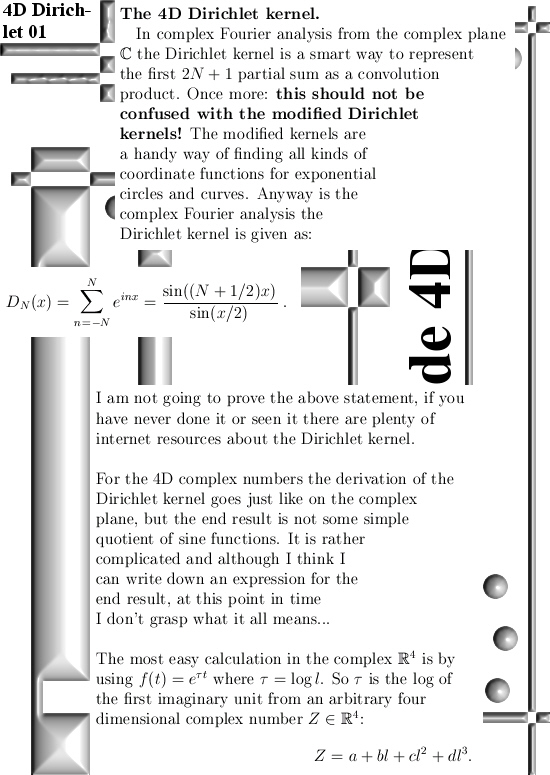
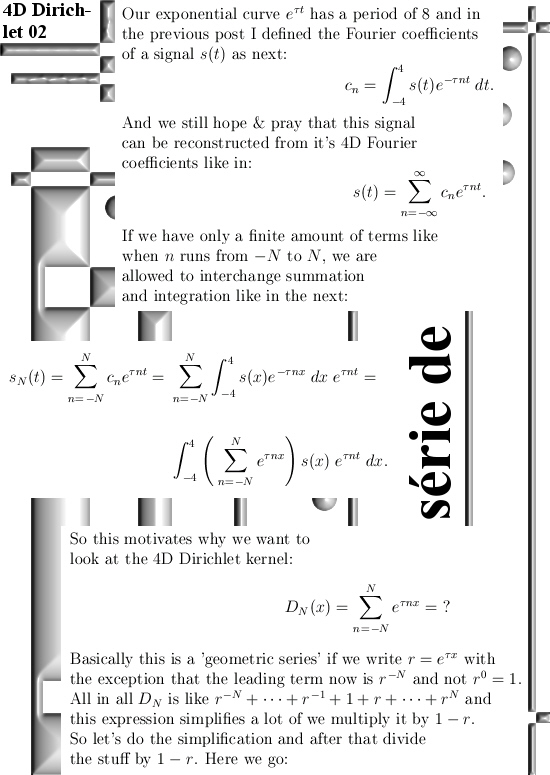
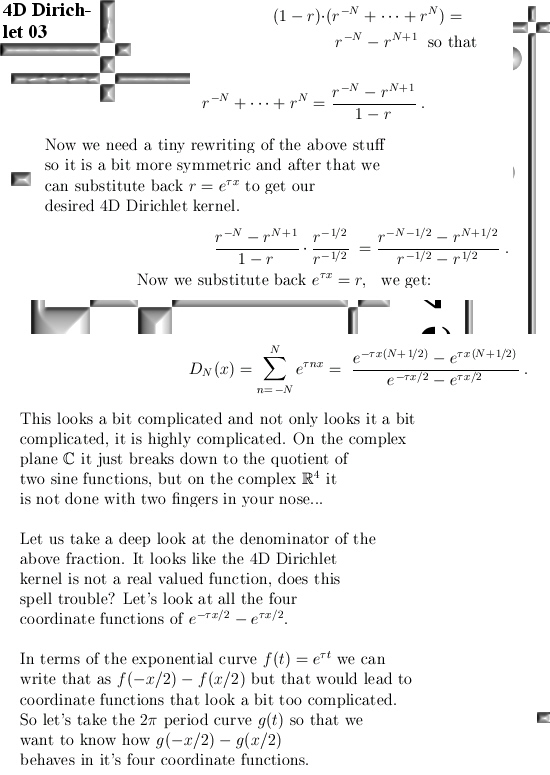
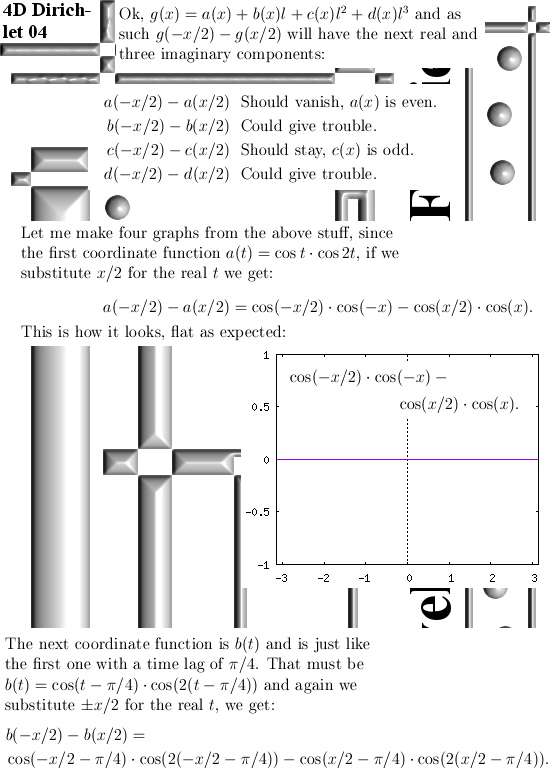
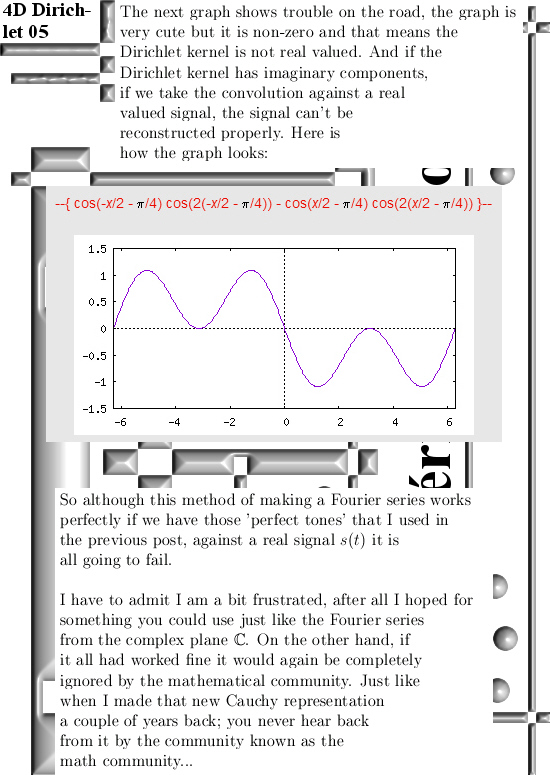
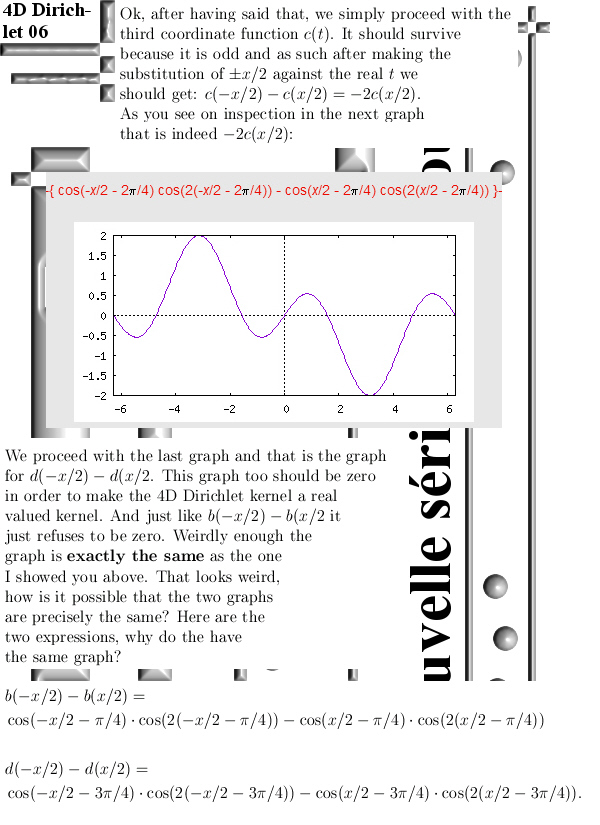
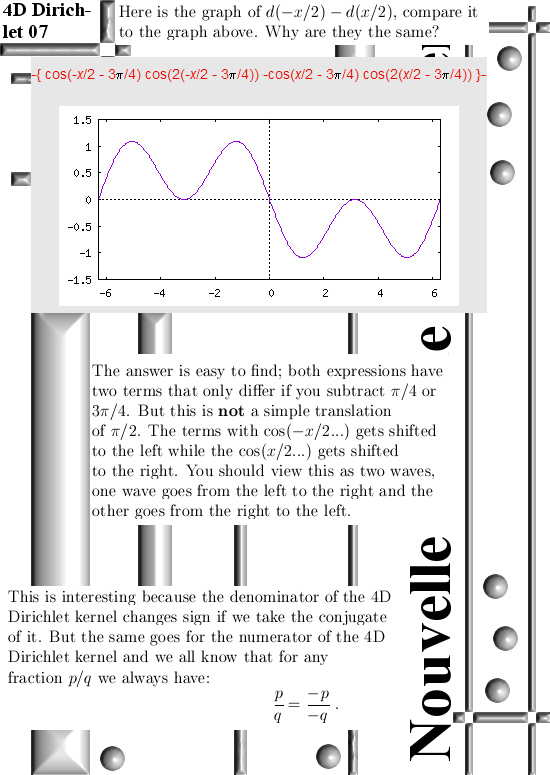
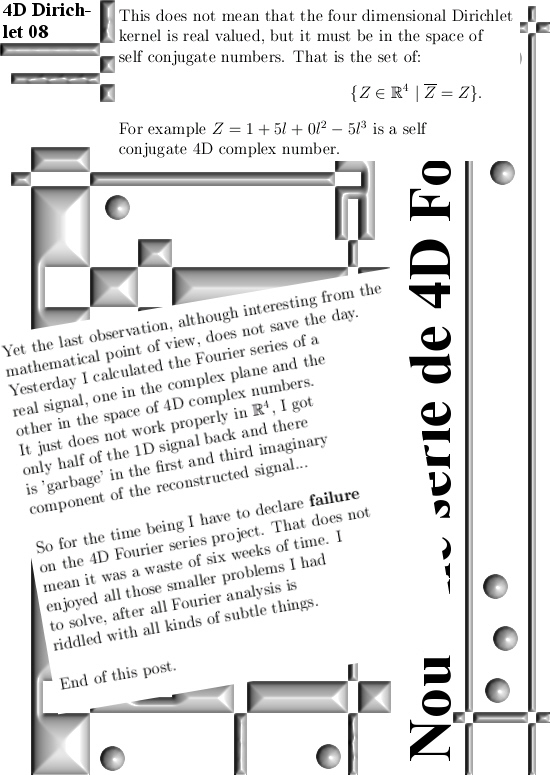
Ok, credits have to go to where that is deserved. I remember that back in the time like in 1990 I found it relatively hard to calculate the 2D Dirichlet kernel. It took me over 15 or 20 minutes but again: that was before the internet era. Yet at present day I was all so simple and why was that? That is because there is a nice Youtube video doing the easy stuff, it is from ‘Flameable math’:
May be at the end I can say the glass is half full because now this reconstruction stuff does not work properly, luckily I do not have to construct the Fejer kernel for 4D complex numbers…
Ok, let’s call it a day and let me end this post.